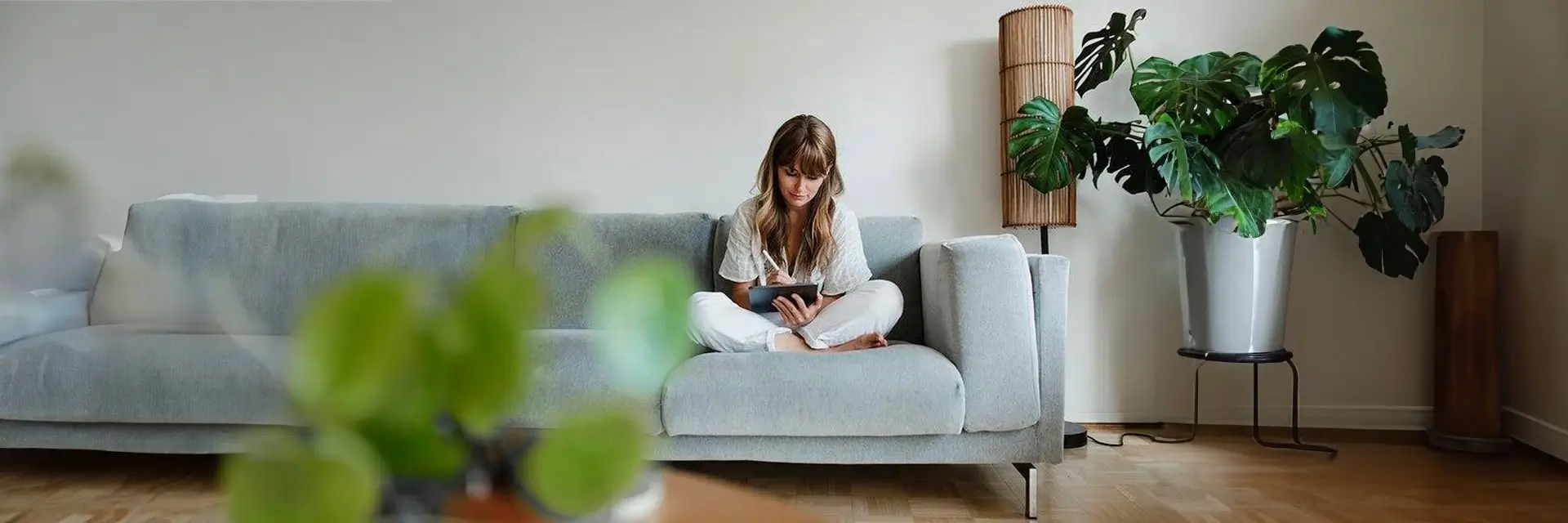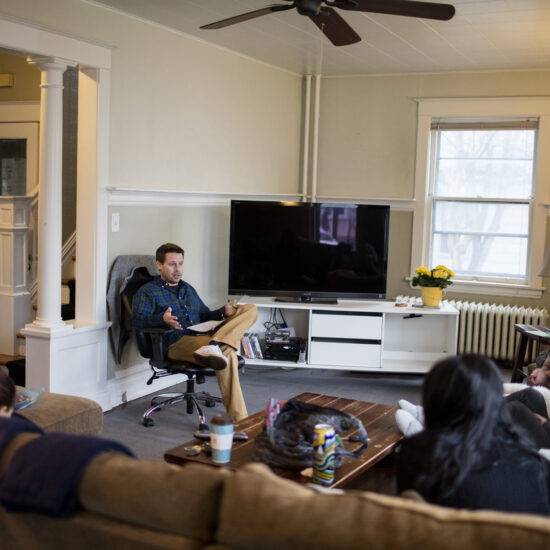Sober living environments, also known as sober homes or halfway houses, are residential settings designed to provide a supportive and structured living environment for individuals recovering from addiction. These environments offer a drug and alcohol-free space where individuals can transition from more intensive treatment settings, like detox vs rehab, back into everyday life while maintaining their sobriety.
Sober living environments are integral to the recovery journey. They offer a supportive community, accountability, and a safe space to practice sober living skills. They allow people to rebuild their lives, develop healthy habits, and establish a strong foundation for long-term sobriety.
In this blog, we will explore the characteristics of sober living environments, exploring their structure, benefits, and what life is like in these settings. We’ll also discuss whether sober living might be the right choice for individuals in recovery and provide guidance on how to make an informed decision.
Understanding Sober Living Environments
Sober living environments, also known as halfway houses or sober homes, serve as transitional housing for individuals recovering from addiction. These environments offer a supportive and structured living arrangement to help residents maintain sobriety and reintegrate into society.
Supportive Community
Living in a sober living environment requires being part of a supportive community where individuals in recovery come together to aid one another. This community is a crucial component of the recovery journey, providing a sense of friendship, understanding, and encouragement. Residents share similar experiences and challenges within this environment, creating a safe space for mutual support and growth. Whether through group discussions, shared activities, or informal conversations, residents uplift each other, offering empathy, guidance, and motivation along the path to sobriety.
Gradual Reintegration
Transitioning from addiction treatment to independent living can be daunting, which is why sober living environments provide a supportive bridge for gradual reintegration into society. During this phase, residents have the opportunity to gradually assume greater responsibilities and autonomy while still receiving support and guidance from the sober living community. This gradual approach allows individuals to build confidence, develop life skills, and practice coping strategies in a supportive and nurturing environment. By easing the transition process, sober living environments empower residents to navigate the complexities of independent living while maintaining their commitment to sobriety.
Structure and Guidelines
- Residents of sober living environments must adhere to specific rules and guidelines established by the facility.
- Standard rules include abstaining from drugs and alcohol, attending support group meetings (such as Alcoholics Anonymous or Narcotics Anonymous), participating in household chores, and following curfews.
- These rules are designed to promote accountability, responsibility, and discipline among residents, fostering an environment conducive to recovery.
Characteristics of Sober Living Homes
Sober living environment homes are distinguished by several key characteristics that contribute to their effectiveness in supporting individuals in recovery.
Safe and Supportive Atmosphere
- Sober living environment homes provide a safe and supportive environment for individuals recovering from addiction.
- Residents benefit from living in a substance-free space where they can focus on their recovery journey without the presence of drugs or alcohol.
- House rules and regulations are enforced to maintain a secure and encouraging atmosphere conducive to sobriety.
Transitional Nature
- Sober living environment homes serve as a transitional living option for individuals who have completed formal addiction treatment programs.
- Residents have the opportunity to gradually reintegrate into society while receiving ongoing support and guidance.
- The structured yet flexible environment helps individuals navigate the challenges of transitioning from treatment to independent living.
Accountability and Responsibility
- Residents are held accountable for their actions and behaviors, fostering a sense of personal responsibility.
- House rules and expectations promote accountability and encourage residents to take ownership of their recovery journey.
- Participating in household chores, attending support meetings, and adhering to curfews are typical responsibilities that help residents develop essential life skills and habits.
Benefits of Sober Living Environments
Sober living environments provide a supportive and structured setting that fosters continued growth and recovery for individuals transitioning from addiction treatment to independent living. Here are some key benefits.
Continued Support
- Residents receive ongoing support from peers and staff members, creating a sense of community and togetherness.
- The supportive environment encourages open communication, allowing residents to share their experiences, seek advice, and offer encouragement to one another.
- Regular group meetings, counseling sessions, and community activities reinforce the importance of sobriety and provide opportunities for emotional expression and growth.
Structure and Routine
- Sober living environments offer a structured daily schedule that includes responsibilities, chores, and recreational activities.
- Following a routine helps residents develop healthy habits and routines, reducing the likelihood of relapse and promoting overall stability.
- The structure provided by sober living homes instills a sense of discipline and accountability, empowering residents to take control of their lives and make positive choices.
Peer Accountability
- A sober living environment surrounded by individuals with similar goals and experiences promotes peer accountability.
- Residents hold each other accountable for their actions and decisions, providing encouragement and support while also challenging one another to stay committed to sobriety.
- Peer accountability fosters a sense of responsibility and commitment to the recovery process, strengthening residents’ resolve to overcome challenges and achieve long-term sobriety.
Life in a Sober Living Environment
A sober living environment involves adhering to a structured daily schedule, following specific house rules, and utilizing available support services to facilitate recovery and personal growth.
Daily Schedule
- Residents typically follow a daily schedule that includes designated times for waking up, meals, chores, group meetings, therapy sessions, and recreational activities.
- Structured routines help residents develop healthy habits, establish a sense of normalcy, and maintain a balanced lifestyle conducive to sobriety.
- Each resident contributes to the upkeep of the household by participating in daily chores and responsibilities, fostering a sense of teamwork and accountability within the community.
House Rules
- Sober living environment homes have established rules and guidelines that residents are expected to follow to maintain a safe and supportive environment.
- Standard house rules may include abstaining from drug and alcohol use, adhering to curfews, respecting personal space, and refraining from disruptive or harmful behavior.
- Enforcement of house rules ensures consistency, promotes accountability, and reinforces the principles of sobriety and mutual respect among residents.
Support Services
- Sober living homes offer various support services to assist residents in their recovery journey, including access to counseling, therapy, support groups, and educational workshops.
- Professional staff members provide guidance, encouragement, and assistance to residents as they navigate challenges and obstacles in their recovery process.
- Residents have the opportunity to participate in individual and group therapy sessions, where they can explore underlying issues, learn coping strategies, and develop essential life skills for long-term sobriety.
Life in a sober living home revolves around structure, accountability, and support, providing residents with the tools and resources they need to maintain sobriety, rebuild their lives, and achieve lasting recovery.
Is Sober Living Environment Right for You?
When considering sober living as part of your recovery journey, there are several factors to take into account to determine if it’s the right fit for you.
- Considerations for Choosing a Sober Living Environment: Reflect on your current living situation, support network, and readiness for structured living. Evaluate whether sober living aligns with your recovery goals and provides the necessary environment for sustained sobriety.
- Discussing Options with a Treatment Provider: Seek guidance from a treatment provider or addiction specialist who can offer personalized advice based on your unique circumstances. They can help assess your readiness for sober living and explore available options tailored to your needs.
FAQs
Q: What is a sober living environment?
A: A sober living environment is a communal residence exclusively for individuals in recovery from addiction. Here, residents adhere to structured guidelines crafted to uphold their sobriety journey while also benefitting from counseling and additional support services.
Q: What is a sober living environment building?
A: Sober living homes offer secure and substance-free settings, facilitating the transition of individuals in recovery as they reintegrate into their communities, utilizing the skills acquired during their rehabilitation from drug and alcohol addiction.
Q: What is sobriety home?
A: Sober living entails finding refuge in a supportive community, enabling individuals to embark on a fresh journey devoid of alcohol or drugs. Those residing in such homes pledge to refrain from substance use while engaging in outpatient treatment or upon completing residential drug rehabilitation.
Your journey to recovery starts now!
In conclusion, sober living environments serve as invaluable stepping stones on the path to lasting recovery from addiction. Offering a structured, supportive, and accountable atmosphere, these homes provide individuals with the tools and resources necessary to navigate the complexities of life after formal treatment. By fostering a sense of community, promoting responsibility, and instilling essential life skills, sober living environments empower residents to rebuild their lives and embrace a future free from the grip of addiction.
If you or a loved one are considering sober living as part of your recovery journey, take the first step towards a brighter tomorrow. Reach out to Bhouses to explore your options and determine if sober living is the right choice for you.










